

A symbol is a visible sign of something else, whether a person, a thing, an idea, or of a mystical experience. The use of symbols in the Church is a very ancient practice, dating back to its very beginnings. On a very deep level, the Seven Sacraments have physical symbols to represent the reality of great mysteries that can not be seen. For example, baptism uses water and oils to physically show us the action of the Holy Spirit bringing us into God’s family.
On a different level, symbols have been used to tell us the stories of the saints throughout the history of the Church. Since we have not met them and do not know what many of the saints looked like, we use symbols to tell us about them. Whenever we see a statue or icon of a saint, their symbol is almost always shown with them to help people know who is being shown and to remind them of their story.
As Catholics, we believe in the Communion of Saints. That means that we believe all the holy people who have gone before us are in heaven with God and praying for the rest of us to be able to join them someday. How can we do that? By living our lives as they did. We look to the saints as examples of how to behave, how to be holy, how to stay strong in our faith in Jesus Christ and Our Heavenly Father.
Below is a list of the saints and symbols that we have included in our Saint Search and Litany games. For further information on this topic please see our resource list at the bottom of this page. Note: Please do NOT use the information found on this page as a basis for any research assignment you have been given! All the information on this page can be found (and properly documented) via our resource list.
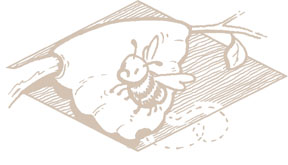
St.
Ambrose d. 397 – bishop, confessor,
doctor
Symbol:
beehive (eloquence)
To be eloquent means to be a great speaker.
An eloquent person is sometimes said to have a voice of honey, because it
attracts people by its sweetness. There is a legend that says when Saint
Ambrose was an infant, a swarm of bees settled on his mouth, causing his elders
to predict great oratorical gifts (eloquence). He spoke on many occasions to
defend the Church against heresy.
St.
Anne 1st century B.C. – mother of Mary
Symbol: book (holy scripture,
divine authorship)
St. Anne
was mother of Mary and grandmother to Jesus. Specifically regarding St.
Anne, the book reflects how St. Anne taught Mary divine scripture along with holy fear and love of God.
St.
Anthony of the Desert d. 356 – abbot,
hermit, confessor
Symbols: bell (invitation, call to
worship), pig (personal symbol)
The bell
is used as a symbol for many consecrated religious saints who were well known
for calling people to lead holier lives. In St. Anthony's time, skin diseases
were sometimes treated by applying pork fat to reduce swelling and itching.
Because this saint's miraculous interventions helped the same
conditions, he has been represented in art with a pig.
St.
Barbara d. 325 – martyr
Symbol: cannon (personal symbol)
St.
Barbara was a beautiful maiden who was imprisoned by her father in a tower for her
disobedience. He later killed her for her conversion to Christianity, but was
immediately struck dead by lightning. Because of her affiliation with towers
and death from the sky, she has become associated with cannons.
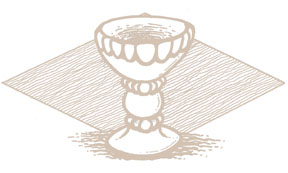
St.
Benedict d. 547 – abbot
Symbol: cup (personal symbol)
The
father of Western Monasticism, St. Benedict developed a strict rule of prayer
and work. He started life as a hermit, but because of his holiness, a group of
monks asked him to join them. Later, resisting his strict rule, they tried to
poison him. St. Benedict is represented by a cup (sometimes cracked) because he
blessed the cup of poison and rendered it harmless.
St. Brigid
of Kildare d. 523 – virgin, abbess
Symbol: cow (personal
symbol)
Born of a pagan Scottish king and a Christian
slave, St. Brigid was baptized by St. Patrick and later influenced by his
preaching. She had a tender heart and she was known for giving away her
master’s possessions to the poor. When she later took charge of her
mother’s master’s dairy, she again often gave the produce away, yet it prospered.
Because of this miracle her mother was freed by her Druid master.
St. Daniel
6th century B.C. –
prophet
Symbol: lion (strength,
fortitude, courage)
St. Daniel was one of the
four major prophets of the Old Testament. These four prophets foreshadow the
New Testament gospel writers. Daniel is the prefigurement of St. Mark, whose
symbol is also a lion (winged). The lion also represents strength, fortitude,
and courage, all traits demonstrated by Daniel when he entered the lion's den.
St. David of Wales d. 544 –
archbishop, confessor
Symbol: harp (personal
symbol)
St. David was the son of the king of Wales and is said to have been related
to King Arthur. He was educated in a monastery and later became the head of it. In his day, many pagan bards who hated Christianity
taught the people through music and song. St. David worked hard to convert many of these
minstrels to the service of Christ. The monks in the monasteries
were happy to have the minstrels music to lift their souls towards
heaven.
St. Dorothy of Caesarea d. 303 –
martyr
Symbol: flowers (beauty,
loveliness, special miracle)
St. Dorothy was a beautiful Christian virgin. She was tried and sentenced to death for her
faith by the Roman governor because of her religious devotion. As she was led away, a young lawyer named Theopholis mockingly asked her to send him flowers from the heavenly garden.
She said she would, and later an angel, as a young boy, appeared to him carrying a
basket of fruit and flowers. Theopholis converted because of this miracle
and later was also martyred for his faith.
St. Edmund d. 870 – king, martyr
Symbol: quiver of arrows
(instrument of martyrdom)
As King of East Anglia, St. Edmund was a model
ruler who was concerned with justice for his people. While fighting off
invasion by the Danes, he was captured and commanded
to give his people to the pagan Danes. When he refused to do so he was
beaten, whipped, shot with arrows, and beheaded.

St. Elijah
9th
century B.C. – prophet
Symbol: cave
(personal symbol)
It was Elijah's mission
to reestablish the covenant and restore the true faith of the Israelite people.
Therefore it was fitting that Elijah returned to Mt. Horeb (Sinai) where the covenant was
originally revealed to Moses. While on the mountain he took shelter in a cave, where
he witnessed storms, earthquakes and fire, which heralded the coming of God.
But when the Divine Presence eventually came to him, it was as “a tiny whispering sound”.
St. Elizabeth of
Portugal d. 1336 – queen
Symbol: crown (sovereignty, victory over hardship)
St. Elizabeth of Portugal was the great-niece of St. Elizabeth of Hungary, for
whom she was named. She had a pious upbringing with daily liturgy, praying of
the hours, and regular religious education. She became the Queen of Portugal at the age of 12. She
suffered through a poor marriage to an unfaithful King. She was known as a
peacemaker because of her efforts to prevent bloodshed within her family. The crown
represents her sovereignty, victory over hardships, and eternal life gained
through faith.
St. Francis of Assisi
d. 1226 – confessor
Symbol:
bird (nature, human souls)
St. Francis of Assisi was well known for his love of
nature. He also loved all people and wished to share the Gospel of Christ with
them. The bird represents his love of nature, but it is also a symbol for the
human soul, many of which he changed through his holy life. One story tells how
St. Francis stopped on a journey to preach to a field full of birds, imploring
them to sing God’s praises at all times, at which they flew away singing.
St. Gabriel – archangel
Symbol:
“Ave Maria Gratia Plena” scroll (message to Mary)
St. Gabriel is one of the
three archangels named in the Bible. His name means "Messenger of God". He
brought messages to Daniel (in the Old Testament), to Zachary (in the New
Testament), and, of course, to Mary, announcing that she had been chosen to bear
the Saviour into the world. The scroll symbolizes the message to Mary, with his
first words (in Latin), “Hail Mary, full of grace!”
St. Genevieve d.
512 – virgin
Symbol: candle (devotion, light of faith)
The
candle represents St. Genevieve’s strong devotion and the light of faith amidst times of strife
in France. At age seven, she befriended St. Germanus who was on his way to England,
and who
foretold her sanctity. She took her religious vows at age 15. During
her lifetime she had visions and
prophesied disasters and invasions. Because of these visions, she organized the people of Paris in
prayer for God’s protection.
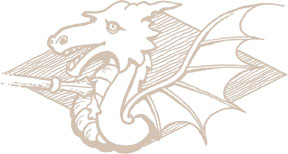
St. George d. circa 303 – martyr
Symbol: slain dragon (defeat of Satan)
Legend tells us that St. George saved a
town from the wrath of a dragon that they could not defeat, and to which they
were sacrificing of pure maidens. After he defeated the dragon the entire
community converted. This is a story that grew to represent the truth of St.
George’s faith and defense of it against the wiles of the devil (the dragon).
In reality, he was a soldier who defended the faith against the emperor
Diocletian, for which he eventually was martyred.
St. Gertrude of Nivelles d. 655 –
virgin, abbess
Symbol: mouse (souls in
purgatory)
Saint Gertrude was a very popular saint in
England, the Lowlands, and neighboring countries. She had a great devotion to
the souls in Purgatory which have been represented in the past by mice. As late
as 1822, offerings of gold and silver mice were still being left at her shrine in Cologne.
St. Gregory the Great d. 605 –
pope, confessor, doctor
Symbol: dove (modesty,
humility, meekness, innocence, divine inspiration, peace)
The dove is a
symbol of peace, humility, meekness, modesty, divine inspiration, and innocence.
St. Gregory embodied all of these during his life of service to the Church, as
priest, theologian, and bishop. His modesty, humility, meekness and
innocence were
reflected in the title he preferred as pope, "Servant of the Servants of God". His
peaceful endeavors included negotiations with invading forces to spare Rome,
ransoming captives, and the protection of Jewish people. Divine inspiration led
him to the convert England, write prolifically, influence the development of Gregorian
Chant.
St. James the Lesser d. circa 61–
apostle, martyr
Symbol: saw (instrument of
martyrdom)
St. James the Lesser was one of the original
twelve apostles. He was a cousin of Jesus and the brother of St. Jude.
He led the Christian Church in Jerusalem until he was gruesomely martyred at the
age of 96. It is said that he was thrown from the top of the temple, but
because he survived the fall he was then stoned, beaten, and sawn asunder.
St. Joan of Arc d. 1431– virgin,
martyr
Symbol: shield (bravery,
God’s protection)
St. Joan was a French peasant girl who received visions
from Saint Catherine, Saint Margaret, and Saint Michael. While
France was under the control of England, these visions encouraged Joan to find
the true King of France, help him reclaim his throne, and lead the French army
to victory. She was eventually martyred as a heretic, but later re-tried
and declared a saint.
 St. Joanna
d. 1st century – disciple
St. Joanna
d. 1st century – disciple
Symbol: lamb (risen Lord)
St. Joanna lived
during the time of Jesus. She was the wife of the steward of King Herod, and is
said to have given the head of St. John the Baptist an honorable burial. Being a
disciple of Jesus, she provided for Him and the apostles (Luke 8:3). The lamb
represents the account in Luke (24:10) which lists her as one of
the three women who discovered the empty tomb on the first Easter.
St. John the
Apostle d. circa 100 – apostle, evangelist
Symbol:
eagle (personal symbol)
St. John is one of
the four writers of the gospels of the New Testament. Symbolically, each gospel
writer is represented by one of the four winged creatures described in the Book
of Ezekiel and the Book of Revelation, namely the winged man, the winged lion,
the winged calf, and the eagle. St. John is represented by the eagle
because from beginning to end the words in his Gospel soar on eagles’ wings to
the very throne of heaven.
St. Joseph d. 1st century – foster father of Jesus
Symbol:
carpenter square (personal symbol), lily (purity of heart)
St. Joseph was the foster father of Jesus. He worked as a carpenter
and thus is represented by
the carpenter’s square. The lily represents his purity of heart and
willingness to follow God’s plan. Legend tells us how Joseph was chosen to be
Mary’s husband. A group of suitors wished to marry her, but Joseph was
divined as the chosen one because the rod he carried miraculously flowered as
the holy spirit appeared as a dove.
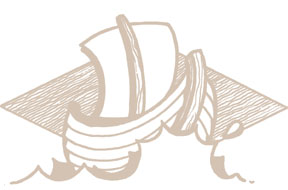
St. Jude the
Apostle d. 1st century – apostle, martyr
Symbol: ship (missionary journeys)
St. Jude
was the
brother of St. James the Lesser, and a nephew of Mary and Joseph. He wrote one
of the epistles in the New Testament. With St. Simon he preached the Gospel
throughout Mesopotamia, Syria, and Persia. The ship symbolizes both his
missionary journeys and the new Church which held fast through his efforts
against the stormy waves of the world.
St. Leonard
d. 559 – hermit, abbot, confessor
Symbol:
lock & chain (personal symbol)
St. Leonard was a
French nobleman in the court of King Clovis I. He was converted by St. Remigius
and later became a monk. He had a remarkable charity toward captives, and
was known to have had prisoners miraculously delivered from their chains through his
intercession prayers. His primary goal though, was to have everyone who
had committed evil deeds understand the true nature of their sins and be
released from them through confession.
St.
Lucy d. 303 – virgin, martyr
Symbol: lamp (light of Christ)
The name Lucy means
“Bringer of Light”. She let the light of Christ into her heart and then
witnessed this light to all around her, from her mother to her executioners.
St. Lucy prayed at the tomb of St. Agatha that her mother would cured of
hemorrhages. Her mother converted after she was miraculously healed.
Because Lucy refused to be married, she was tortured by having
her eyes torn out. After this, she could not be moved from her spot
despite oxen being used,
nor would any wood ignite to burn her. She was finally martyred by being
stabbed with a dagger. It is said that her vision was restored before she died. The
lamp provides light so that we might see, just as Lucy spread the light of Christ and was
miraculously given sight again.
St.
Martin of Tours d. 400 – bishop, confessor
Symbol: goose (personal symbol)
St. Martin is well known for giving half of his cloak to a
beggar on a cold night, who afterwards appeared to him in a dream as Jesus wearing the
cloak. The goose is sometimes used to symbolize him because it
is said that a honking goose revealed his hiding place, after he hid to avoid
being made bishop of Tours!
St.
Matthew the Apostle d. 90 – apostle, evangelist,
martyr
Symbol: 3 money bags (personal symbol)
St. Matthew
was one of the original 12 apostles and one of the four gospel writers. The
money bags represent St. Matthew’s former occupation as tax collector for the
Roman Empire as well as his sinful nature. His position as tax collector
was looked upon as "collaborating with the enemy". When people were surprised to see Jesus
with such a traitor He told that that he had come "not to call the just, but
sinners."
St.
Michael – archangel
Symbol:
flaming sword (power of God)
St. Michael is the first of the archangels and
prince of the heavenly host. He is often shown as
a handsome warrior angel carrying a flaming sword, representing the power of
God. It was Michael who led the good angels against Satan and the angels who
turned away from God.
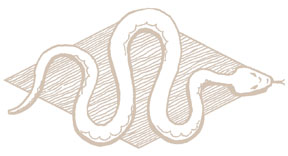 St. Patrick
d. circa 5th century – bishop, confessor
St. Patrick
d. circa 5th century – bishop, confessor
Symbol:
snake (Satan, sin, fall of Man, wisdom, falsity)
As a boy, St. Patrick was stolen
from his home in England and sold into slavery in Ireland. After escaping,
he became a
priest. Later he was named a bishop and was sent back to Ireland where he
converted the entire
country to Christianity. A legend says that St. Patrick drove all the snakes
out of Ireland. This symbolizes how he got rid of the people’s evil practices
and kept the good for their worship of God.
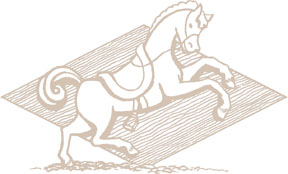
St. Paul
d. circa 68 – apostle, martyr
Symbol: horse (personal symbol)
Being a Roman soldier of Jewish descent, St. Paul persecuted the
new Christians. One day, while on the road to Damascus to arrest some
Christians, a blinding
light flashed from the sky and knocked St. Paul off his horse. A voice said to
him, “I am Jesus, whom you are persecuting.” (Acts 9:1-9) From then on, Paul
spent his life making missionary journeys to spread the news of Christ to the
Gentiles of the world.
St. Peter the Apostle
d. circa 68 – apostle, martyr
Symbol:
two crossed keys (Office of Keys)
Jesus said that St. Peter would be
the rock upon which He would build his Church (Peter means “rock”).
Because of this, St. Peter became the first Pope. The crossed keys
symbolize the "Office of the Keys" given by Jesus to the Church on earth
(Matthew 16:19) which is the power to forgive or retain sins. One key
represents Excommunication, a locked door to the unrepentant sinner. The
other key stands for Absolution, the open door to the Kingdom for the repentant
sinner.
St. Philip Neri
d. 1595 – priest, confessor
Symbol: lily (purity of heart and soul)
St. Philip Neri founded the society of the Oratorians
in Rome. He had visions and was known as a great confessor who
could tell penitents their sins before they confessed. The lily symbolizes his
purity of soul and heart.
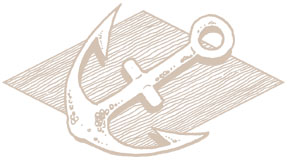 St. Philomena
d. circa 303 – virgin, martyr
St. Philomena
d. circa 303 – virgin, martyr
Symbol:
anchor (hope in Christ, instrument of martyrdom)
At age
13, St. Philomena was promised by her father to be the Emperor Diocletian’s bride. She refused.
When torture did not convince her, she was ordered to be killed. An anchor was
tied around her neck and she was thrown into the river. Angels came
and cut
the rope and she emerged from the river without a drop of water on her clothes. The anchor
symbolizes her trials and her hope in Christ.
St. Raphael
– archangel
Symbol:
fish (healing)
The name Raphael
mean’s “God has healed”. St. Raphael, the archangel, instructed Tobias, to
repel the demon in Sarah, his mother, by using the odor of burning fish liver and to heal
his father's vision by applying the gall of a fish. This story is appears in the Book of Tobit.
Thus the fish is an ancient symbol of healing and of St. Raphael.
St. Simon Zelotes
d. 1st century – apostle, martyr
Symbol: crossed oar (travel) and saw (instrument
of martyrdom)
St. Simon was one of the original 12 apostles called by Jesus.
He was St. Jude's companion during his missionary
journeys. The oar represents these many travels. His martyrdom is symbolized
by the saw. The exact manner of his death is not known, but he is generally
thought to have been sawn asunder or beheaded. It is certain that he was
martyred.
St. Theodore
d. 306 – martyr
Symbol:
crocodile (personal symbol)
St. Theodore lived in the East of
the Roman Empire. He was a soldier in the Emperor’s army, and, when an edict
was issued against the Christians, he was asked in the court at Amasea to offer
a sacrifice to the pagan gods. He refused, declaring his belief in the divinity
of Jesus Christ. Given time to rethink his answer, he spent it by burning
down the
Temple of Cybele (a pagan goddess). For this crime he was tortured and burned at the
stake. The crocodile represents one of the pagan gods associated with the
Temple he destroyed. St. Theodore is one of the patron saints of Venice, Italy,
which displays in its square a great column showing him standing in victory on
the pagan crocodile.
 St. Therese of Lisieux
d. 1897 – virgin, doctor
St. Therese of Lisieux
d. 1897 – virgin, doctor
Symbol: rose (personal symbol)
St. Therese lived a short but intense life,
dying of tuberculosis at the age of 24. For seven years she lived in the
Carmelite monastery at Lisieux with her two older sisters. All her energies were spent
on perfecting what she called “The Little Way”, her way of contemplating God
with childlike wonder. Pope John Paul II made her a Doctor of the Church.
She always loved flowers, and promised to spend her heaven doing good on earth
by letting “fall a shower of roses” – miracles – after her death.
St. Thomas More
d. 1535 – lawyer, statesman, martyr
Symbol:
axe (instrument of martyrdom)
St. Thomas More was Lord
Chancellor of England, second only to King Henry the VIII, who was his friend.
When he was asked to swear that the King was the head
of the Church in England above the Pope, St. Thomas refused. He resigned, was
imprisoned in the Tower of London, and eventually beheaded for refusing to bend
his religious beliefs.
St. Victor of
Marseilles d. 290 – martyr
Symbol:
windmill (instrument of martyrdom)
St. Victor was a soldier in the Roman army
at Marseilles. He exhorted the local Christians to be firm in their faith
during the Emperor’s visit. For this, he was imprisoned and tortured, but
converted three of the prison guards. After refusing to offer incense to
Jupiter, he was crushed under a millstone and beheaded. The windmill, of which
the millstone is a part, is a symbol of his martyrdom.
RESOURCES for FURTHER REFERENCE
Books
Beggars, Beasts, and Easter
Fire: Stories of Early Saints by Carol Greene, Lion
Publishing, Batavia, Illinois, 1993.
Church Symbolism
by F.R. Webber, The Morgan Lithograph Corp, Cleveland, Ohio, 1938.
Dictionary of Saints
by John J. Delaney, Doubleday, New York, NY, 1980.
Lives and Legends of the
Saints by Carole Armstrong, Simon & Schuster Books for
Young Readers, New York, NY, 1995.
The Family Rosary Edition of
the Holy Bible, The Catholic Press, Inc., Chicago
Illinois, 1954.
The New
American Bible - Saint Joseph Edition, Catholic Book Publishing Co., New
York, 1992.
Saint Philomena the Wonder Worker by Fr. Paul O’Sullivan, O.P., Tan Books and
Publishers, Inc., Rockford, Illinois, 1993
Saint Therese of Lisieux by Michael Morris, O.P.,
"Magnificat" article, publisher: Pierre-Marie Dumont, Vol. 6, No. 8, Oct. 2004.
Web Sites
Catholic Online
http://www.catholic.org/saints/
EWTN.com
http://www.ewtn.com/library/
The
Catholic Forum
http://www.catholic-forum.com/saints/
The Printery House, Conception Abbey
http://www.printeryhouse.org/


